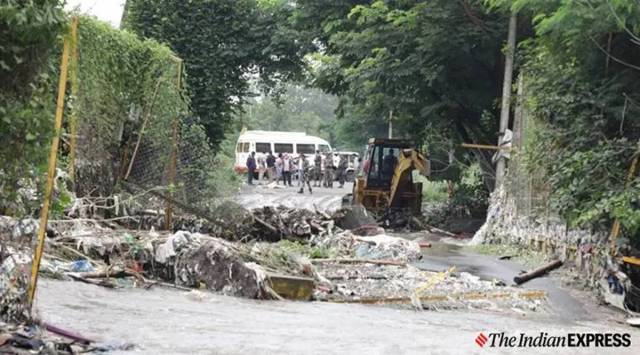- India
- International
To tackle flash floods & issue advance warnings, IMD launches guidance system for South Asia
India is leading a delegation of nations, including Bhutan, Sri Lanka, Bangladesh and Nepal, in sharing hydrological and meteorological data towards preparing flash flood forecasts.
 Data from World Meteorological Organisation (WMO) suggest that across the world, about 5,000 people die annually due to flash floods. (Representational)
Data from World Meteorological Organisation (WMO) suggest that across the world, about 5,000 people die annually due to flash floods. (Representational)The India Meteorological Department (IMD) on Friday launched the South Asian Flash Flood Guidance System (FFGS), which is aimed at helping disaster management teams and governments make timely evacuation plans ahead of the actual event of flooding.
India is leading a delegation of nations, including Bhutan, Sri Lanka, Bangladesh and Nepal, in sharing hydrological and meteorological data towards preparing flash flood forecasts. India’s National Disaster Management Authority and the Central Water Commission have also partnered in this system.
Data from World Meteorological Organisation (WMO) suggest that across the world, about 5,000 people die annually due to flash floods. Despite such high mortality, there is no robust forecasting or warning system for flash floods, noted the Asian experts.
The heads of meteorological and hydrological departments of the WMO and the four South Asian countries put forth their views and the urgent need for such a warning system, which has been developed by US-based Hydrologic Research Centre.
M Rajeevan, secretary of the Ministry of Earth Sciences (MoES), highlighted that the frequency of extreme rainfall events has increased due to climate change and tSouth Asia is highly prone to flash floods.

Meteorologists from these South Asian countries unanimously said that forecasting flash floods was a real challenge. “Forecasting flash floods is very difficult as an event can occur within three to six hours over a localised area and the water run-off quantity is very high. Flash floods can occur in cities and hilly regions,” said Rajeevan, who launched the system during an online event.
As much as 80 per cent of natural disasters experienced in all these South Asian countries is contributed by erratic weather. “Among these, flash floods… lead to heavy loss of lives and to property. In addition, the impact over South Asia increases many times due to varying topography — mountains, oceans, Eastern and Western Ghats, Myanmar hills and others,” said Mrutyunjay Mohapatra, director general of IMD.
Flash floods are sudden surges in water levels during or following an intense spell of rain, occuring in a short time duration over a localised area. The flood situation worsens in the presence of choked drainage lines or encroachments obstructing the natural flow of water.
In the latest incident involving flash floods, Hyderabad city was battered by heavy rain, resulting in massive flooding which inundated roads, earlier this month. As the city recorded 191 mm of rain within the span of a few hours, the heaviest in 97 years recorded in October, several water bodies in Telangana’s capital breached danger levels, worsening the overall flood situation. Nearly 70 people lost their lives and many hundreds were displaced from their homes.
In the following days, Sangli, Solapur and Pune districts in Maharashtra also faced similar intense rain and flooding that claimed over 30 lives and damaged standing kharif crop.
A dedicated FFGS centre will be established in New Delhi, where weather modelling and analysis of rainfall data observations from member countries will be done.
“Based on the rainfall and potential flooding scenario, flash flood warnings will be issued to respective nations. Flash flood threat warning will be issued six hours in advance, whereas flood risk warning will be issued 24 hours in advance. Warnings about watershed level will be issued 12 hours in advance,” said Mohapatra, who emphasised on the need to disseminate warnings to the last-mile beneficiary using appropriate media.
The MoES Secretary stressed on the need for each member-nation to improve their weather observational networks so that more data is available at the time of issuing warnings. “Soil moisture data is also important and there is a need to augment the existing network,” he said.
Southwest Monsoon to withdraw completely by Oct 28 : IMD
This year, Southwest Monsoon is likely to withdraw from the entire country by October 28 and subsequently, the Northeast Monsoon will commence over the southern peninsula, IMD stated in its latest All India weather bulletin.
As on Friday, the withdrawal line passed through Ranchi, Pendra Road, Mandla, Narsinghpur, Indore and Porbandar, and is expected to withdraw completely from Jharkhand, Chattisgar, Madhya Pradesh, Gujarat and north Maharashtra by October 25. The monsoon will retreat from Maharashtra by October 25, according to the Regional Meteorological Centre, Mumbai.
Apr 19: Latest News
- 01
- 02
- 03
- 04
- 05





























